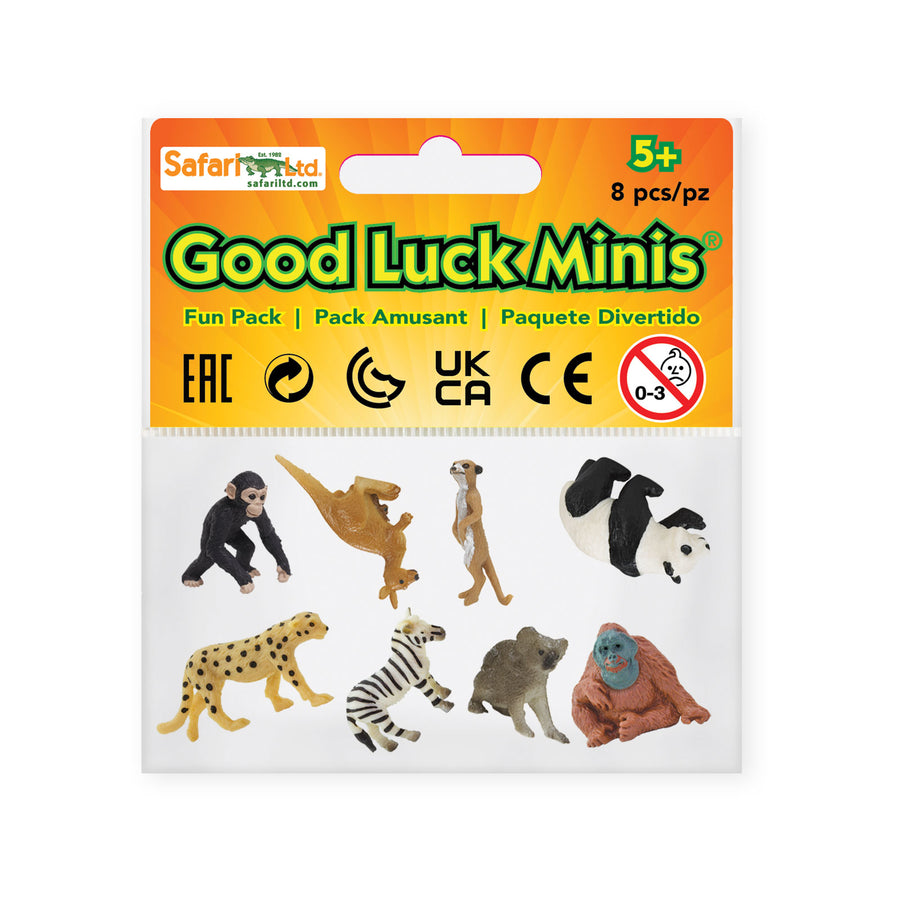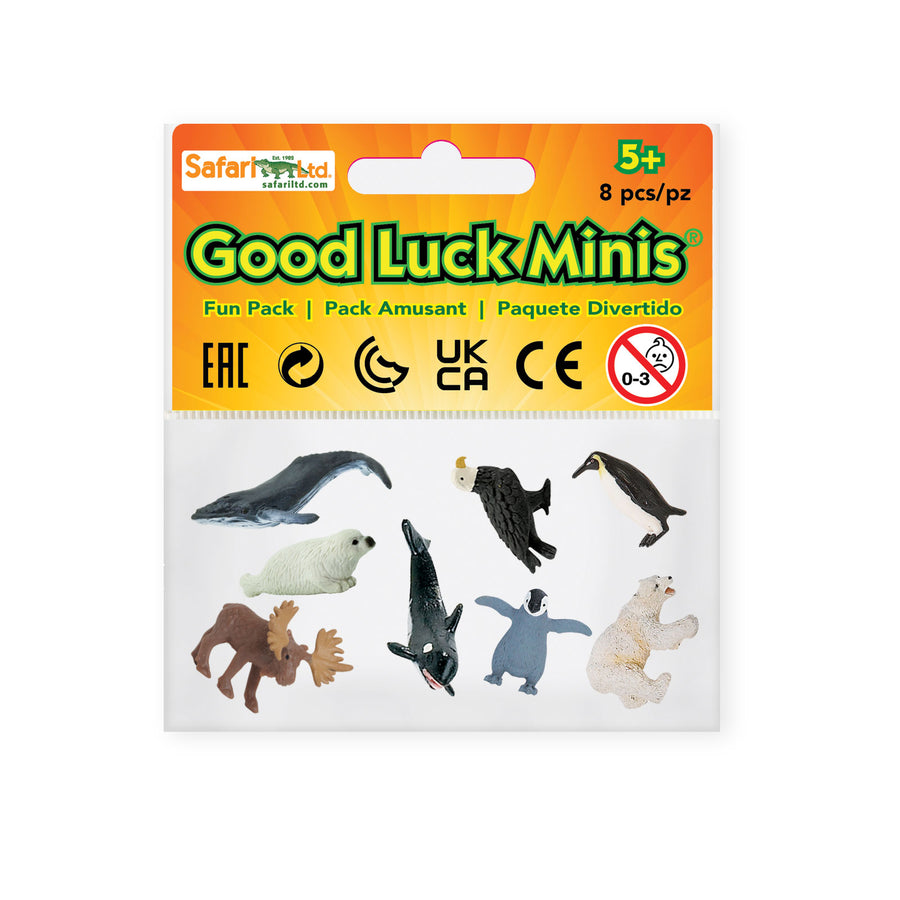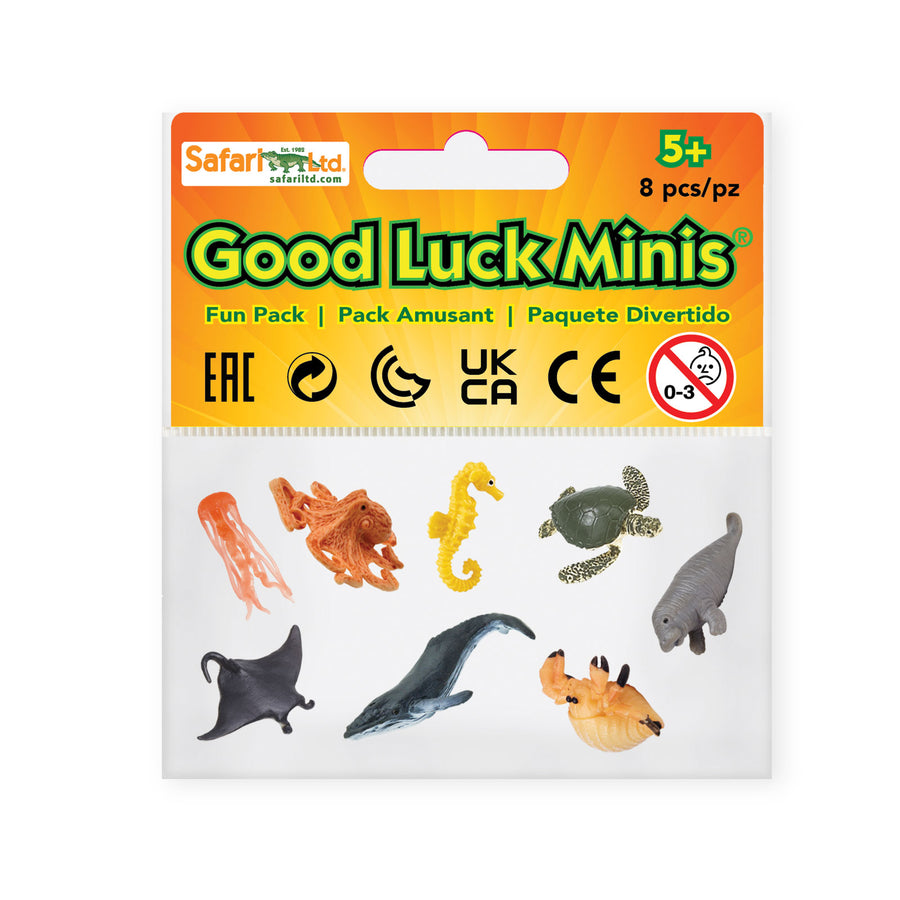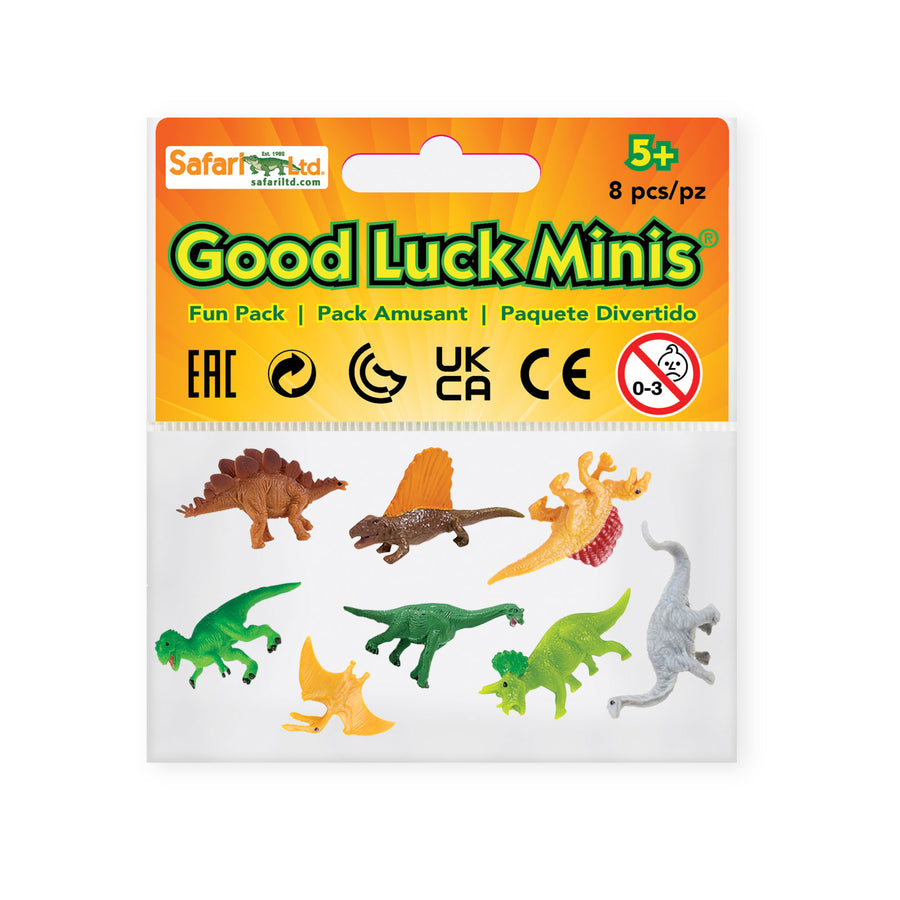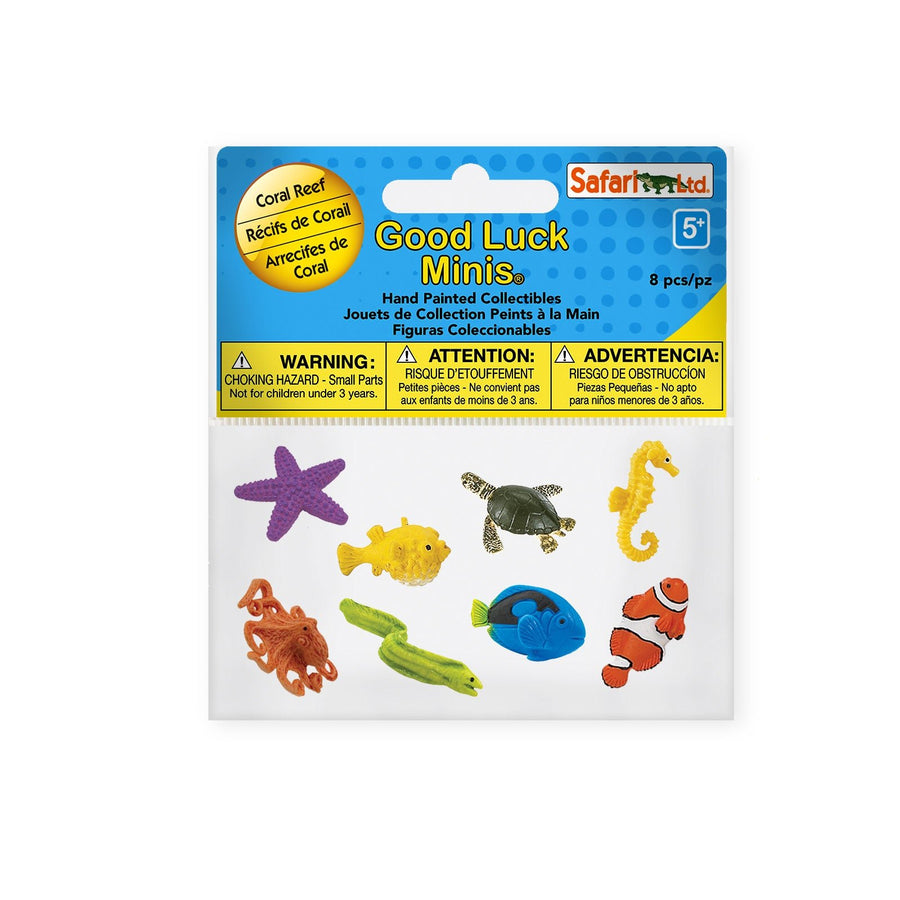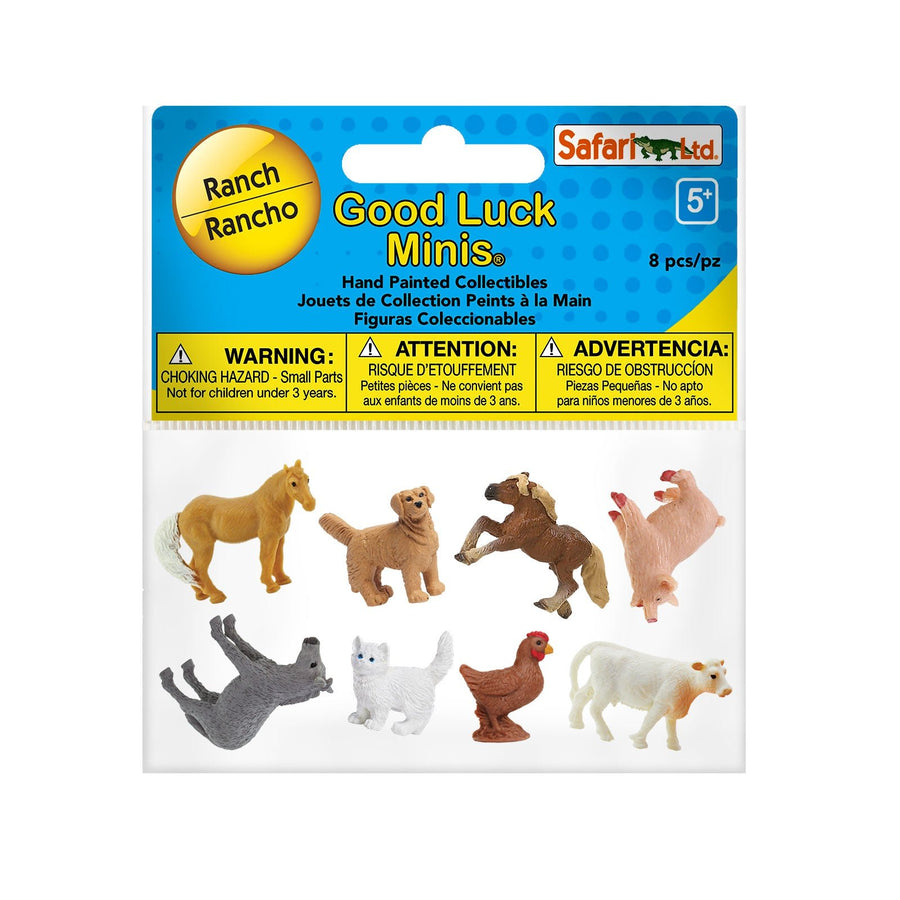What is an Ocean Sensory Bottle?

Sensory bottles, often called “calm down bottles,” are a great DIY for toddlers! They remind me of the lava lamps I had as a kid and there is something so soothing about watching them. We use ours with my daughter when she needs to take a little break, when she's on the potty, or when she needs help waiting for something. Sensory bottles usually include glue, water, glitter and some small toys. We used ocean animal Good Luck Minis from the Good Luck Minis Toob for ours so that it looks like all of the animals are swimming in the ocean as she turns the bottle up and down!
Materials Needed:
- Good Luck Minis
- A Sensory Jar / Bottle or any empty clear container (we used an old juice bottle and removed the label) that can seal tight.
- Clear glue or glitter glue
- Additional glitter
- Small beads (optional)
- Water
- Food coloring (optional)
- Super glue (optional)
How to Make a Sensory Bottle:
- Step 1: Squirt approximately ½ cup of glue into the bottom of your empty bottle. Clear glue or colored glitter glue will both work for your sensory bottle. Be sure to avoid any opaque glue or you will not be able to see your Good Luck Minis when the bottle is complete!
- Step 2: Sprinkle in additional glitter, if desired. We used large glitter that we already had at home, but any size glitter will work for these! At this stage you can also add small items like beads to the bottle. Note that the more you add, the harder it will be to find the Good Luck Minis in the bottle later!
- Step 3: Add Good Luck Minis to your bottle! We used the Good Luck Minis Toob and picked out all of the ocean animals we could find! You can use any minis you want in your bottle.
- Step 4: Fill the remainder of the bottle with water. You can add a couple of drops of food coloring to the water if desired. Try not to make your water too dark so that you can still see the animals as they float in it!
- Step 5: Put the lid back on your bottle. If you are concerned your kids will open the bottle, you can super glue it on. I put some strong tape around our lid to keep it closed because we are hoping to take our Good Luck Minis back out eventually.
How do you play with an Ocean Sensory Bottle?
To play with the sensory bottle, your kids can shake it, turn it upside down, roll it and watch the animals inside as they move! We love to play “I spy” with ours. I name an animal and they turn the bottle and look for it in the water.
Educational Value
Sensory bottles are so much more than just another fun DIY project. They’re a hands-on way for kids to learn about ocean life and ecosystems. When they shake and tilt the bottle, kids can see how different marine creatures move and interact in water. It’s a great activity for parents and teachers to introduce key concepts like habitats, marine food chains, and conservation.
For even more in-depth learning, discuss the animals inside the bottle. Ask your child questions like, “What do dolphins eat?” or “Why do sea turtles migrate?” You can use the Good Luck Minis to spark kids’ curiosity about real ocean animals and their behavior. That will only encourage them to research further. They might even want to take a trip to the aquarium or the library to learn more.
Scientific Exploration
Building a sensory bottle is fun, but that’s not all. It’s an easy way to introduce different scientific concepts to your kids. Mixing glue and water in the sensory bottle is a fascinating experiment in density and viscosity.
You can ask your child about why some objects sink and others float, for example. Then you can explain how the glue thickens the water, which slows down movement and changes how objects behave in the fluid.
For even more experimentation, add different liquids to the bottle to see how they affect the animals’ movement. What happens if you use oil instead of glue? How do the air bubbles move through the different liquids? Simple changes can turn the sensory bottle into a miniature science experiment that encourages interactive learning.
Variations for Different Age Groups
Sensory bottle projects can be adjusted to accommodate different age groups. You might give a toddler a simple clear bottle filled with a few Good Luck Minis and some colorful glitter. It will let them explore freely as they observe how the objects move.
Preschoolers might enjoy an “I Spy” sensory bottle challenge. You can ask them to find specific animals that are inside. Just name an animal and have your child rotate the bottle until they spot it. The game will build observational skills and vocabulary.
Older children can take the project a step further by creating themed bottles. One bottle might represent deep-sea creatures, while another showcases life in coral reefs. You can encourage your school-aged kids to research and select the right animals. You’ll turn the activity into a creative learning opportunity.
Integration with Curriculum
It’s easy for teachers and homeschool parents to incorporate ocean sensory bottles into their lesson plans. An ocean sensory bottle is a hands-on supplement to science lessons about marine biology. You can pair it with books about ocean life, documentaries, or even art projects featuring sea creatures.
For a geography lesson, you can use sensory bottles to teach about oceanic zones. Just label the bottle with layers like the sunlight zone, twilight zone, and midnight zone. Then you can have the kids sort Good Luck Minis based on where the animals live. You’ll be reinforcing students’ understanding of ocean depth and marine life distribution.
Customization Options
Our instructions focus on using figurines of ocean animals, but the customization possibilities for your sensory bottle are as unlimited as your imagination. While you don’t have to use an ocean theme at all, you might have your kids create sensory bottles that reflect different kinds of underwater scenes. For example:
- Tide Pool Sensory Bottle: You can use sand-colored glitter, tiny shells, and sea star Good Luck Minis to mimic a coastal tide pool.
- Coral Reef Bottle: Add bright beads, colorful sea creatures, and a few pieces of cut-up sponge to represent coral.
- Deep-Sea Exploration Bottle: For this version, use darker blue food coloring, glow-in-the-dark stars, and deep-sea creatures like anglerfish.
Encourage children to select elements that match their chosen ocean environment. The activity helps them develop creativity while it reinforces what they’ve learned about marine life.
Sensory Processing Benefits
What are the benefits of an ocean sensory bottle?
In general, sensory bottles serve a valuable purpose that supersedes mere entertainment. Many children benefit from calming activities – especially if they have a sensory processing issue. When they watch the slow movement of water and glitter, it can reduce anxiety, improve focus, and provide a quiet, soothing experience.
Kids who struggle with transitions – bedtime or car rides, for instance – might find comfort in shaking or rolling a sensory bottle. The repetitive motion is a source of predictable visual feedback, which can help with self-regulation. If your child feels overwhelmed, they can focus on finding a specific Good Luck Mini in the bottle. The activity is grounding and it encourages both relaxation and mindfulness.
For even more engagement, why not try different fillers for more varied sensory feedback? Heavier glitter, larger beads, or textured objects can change how the bottle feels when shaken. Even the slightest variations in resistance can offer extra sensory input, so the bottle becomes even more stimulating – or calming, depending on your child’s needs.
Comparative Ocean Ecosystems
If a single ocean sensory bottle is fun, think what a blast your child will have by making multiple bottles that represent different ocean environments. It’s another layer of learning that will encourage kids to explore how different regions of the ocean look and feel. A few ideas include:
- Shallow Coastal Waters: Use lighter blue water, add sand, and include small fish, crabs, and sea turtles.
- Open Ocean: Keep the water a deep blue, but include larger animals like whales and dolphins.
- Deep-Sea Trenches: Use dark blue or black water, glow-in-the-dark elements, and unique deep-sea creatures.
While creating the different sensory bottles, you and your child can discuss how different animals adapt to their environments.
Why do deep-sea creatures often have bioluminescence? Why do fish in shallow waters need camouflage?
Questions such as these will spark critical thinking and help kids understand the diversity of ocean life.
A Gateway to Learning
Ocean sensory bottles are so much more than crafts. They’re a true gateway to learning. The bottles encourage scientific exploration, they reinforce ocean knowledge, and they provide sensory benefits.
When you incorporate age-appropriate variations, integrate them into educational curriculum, and customize the sensory bottles, the simple activity transforms into a rich teaching tool.
Go ahead! Let your child experiment, explore, and engage their imagination!
This post is by Emily Limer. Emily is a preschool teacher and mom of two toddlers who love to play with Safari Ltd. animals! You can follow her on Instagram @makingwithmommy for more kids craft and play ideas.
For more information on sensory play, including a how-to on sensory bins, how to make them and how to use them, click here. We've got the 411 PLUS our favorite inspirational collection of sensory bins!
Our wildly popular Good Luck Minis® are pocket-sized tiny figures that are perfect for craft projects, event giveaways, or just keeping around for good luck! Our small animal toy fun packs will help you create your own tiny world of mini toys! Shop more here!


